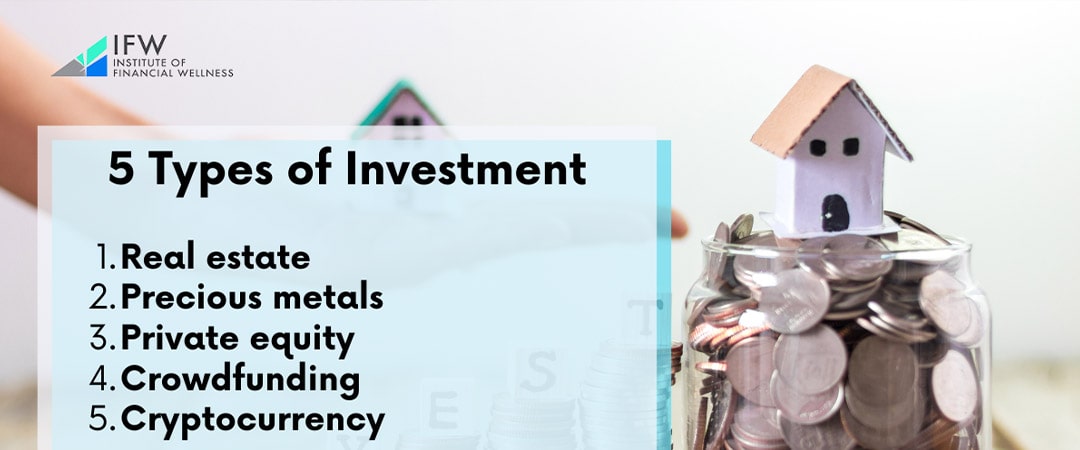“Retirement is a time to enjoy the things you never could before.” — Catherine Pulsifer
Navigating retirement investments is crucial for a financially stable future. Let’s buckle up and explore reliable strategies for growing your retirement savings without unnecessary complexity. From diversified portfolios to maximizing Social Security benefits, learn how to make informed decisions that align with your long-term financial comfort.
Let’s get started on your journey to retirement success with The IFW’s proven strategies. Register now for a custom retirement plan with our Retirement Roadmap Services!
Key Takeaways
- A diversified retirement portfolio, adjusted for risk tolerance and longevity of retirement, is essential for financial stability in later years and should be regularly rebalanced to maintain aligned investment goals.
- Maximizing Social Security benefits through strategic timing of withdrawals and understanding spousal or ex-spouse benefits can significantly enhance retirement income.
- Tax efficiency in retirement investments, through vehicles such as Roth IRAs, municipal bonds, and dividend-paying stocks, is crucial for minimizing tax liabilities and providing a sustainable income in retirement.
Building a Diversified Retirement Portfolio For Retirement Investments

A diversified retirement portfolio is not just a recommendation; it’s a necessity. Diversification helps manage risk and optimize returns, ensuring that your retirement years are not marred by financial stress. As you approach retirement, aim to adjust your asset allocation to become more conservative whilst meeting or exceeding withdrawal rates.
A balanced strategy for a retirement portfolio involves a total return investment approach, which includes income from interest, dividends, and capital gains. Your retirement portfolio should take into account your risk tolerance level, time horizon, and the need for your savings to potentially last almost 30 years due to longer life expectancies.
Investment diversification can be achieved through mutual funds and ETFs that focus on dividend-paying stocks, thus reducing the risk of your retirement portfolio. Financial advisors can be pivotal in creating personalized investment strategies based on your risk tolerance and goals, ensuring a well-diversified retirement portfolio.
Asset Allocation
Asset allocation is an art and a science. It’s a delicate balance of risk and return in an investment portfolio. Target-date funds serve as a viable strategy for those seeking a low-maintenance approach to asset allocation. As the investor approaches retirement, these funds automatically adjust the asset allocation.
ETFs or Exchange Traded Funds offer the flexibility of intra-day trading, which can be beneficial for real-time asset allocation adjustments. Meanwhile, index funds are advantageous because of their lower costs and simplicity of ownership, making them a strategic choice for asset allocation.
The right blend of asset classes in your portfolio is essential for balancing the risk and return. Whether it’s stocks or bonds, property, or cash, a diversified portfolio can provide a steady stream of income while ensuring your retirement savings are not overly exposed to market volatility.
Investment Types

The variety in investment types, including retirement accounts, allows you to tailor your retirement portfolio based on your financial goals and risk tolerance. Traditional investment vehicles like individual stocks and bonds often form a significant portion of retirement portfolios.
A self-directed IRA offers a wider range of investment opportunities, including:
- Real estate
- Precious metals
- Private equity
- Crowdfunding
- Cryptocurrency
It provides the benefit of tax-deferred growth, making it an attractive option for many investors. As retirement draws closer, some investors transition towards annuities to capitalize on their downside protection feature.
Constructing a bond ladder is another strategy that can provide retirees with a steady income stream over the course of retirement. These investment types, when chosen wisely, can ensure a robust and diversified retirement portfolio.
Rebalancing
Rebalancing is an integral part of retirement portfolio management. It ensures that your financial goals and timelines for investment returns stay aligned, especially as retirement nears. Younger investors with a focus on growth may need less frequent portfolio rebalancing than those closer to retirement due to their longer investment timelines and higher risk tolerance.
It is recommended to conduct an annual portfolio review. Adjustments are considered necessary if the asset allocation deviates by more than 5% from the target balance. During retirement, rebalancing is a strategy to maintain a cash buffer and provide predictable income while still supporting portfolio growth.
For those seeking a hands-off approach to rebalancing, target-date funds and robo-advisors offer automatic portfolio rebalancing. This simplifies the adjustment of the asset mix as the investor approaches retirement.
Maximizing Social Security Benefits
Social Security retirement benefits form a significant part of many retirees’ income. Maximizing these benefits can substantially boost your retirement income. One strategy is to wait until full retirement age or beyond to avoid benefit reductions. For each year you delay up until age 70, an additional 8% in benefits can be accrued [1].
Married individuals may receive up to 50% of the partner’s eligible amount in spousal benefits. This also includes benefits for divorcees from an ex-spouse’s earnings if they haven’t remarried. Ensuring the accuracy of your Social Security statements is also crucial, as benefits are calculated based on your 35 highest-earning years.
Working for at least 35 years can increase the average earnings calculation, and if you have received benefits for less than one year, consider the option to stop and reapply for increased benefits. These strategies can help you maximize your Social Security benefits and enjoy a comfortable retirement.
Tax-Efficient Retirement Investments

In the realm of retirement investments, tax efficiency plays a crucial role. Investments in a Roth IRA can be particularly advantageous as withdrawals are tax-free beginning at age 59½, and there are no required minimum distributions, allowing these assets to potentially grow indefinitely.
Rolling over Roth 401(k) accounts into a Roth IRA can eliminate required minimum distributions and allow you to benefit from the tax-free growth and withdrawals offered by Roth IRAs. Furthermore, investing in municipal bonds can provide tax-exempt income, thereby reducing your state and local taxes liability. Additionally, understanding the estate tax exemption can help in planning your financial future.
Adopting a sequential approach to liquidating retirement investments can also optimize tax efficiency, including managing estate tax. Starting with required minimum distributions and moving through other income sources as needed can help manage your taxes effectively.
Dividend-Paying Stocks
Dividend income from dividend-paying stocks offers yet another venue for tax-efficient income generation, as investors may have a lower obligation to pay income tax, including state income tax, compared to other sources of income, such as property taxes and sales taxes. Companies that pay dividends tend to be stable and profitable, making their stocks a safer and less risky investment option for retirees.
Dividends taxed at the lower capital gains rate can provide a tax-efficient source of income for retirees if certain requirements, such as minimum holding periods, are met. The income from dividend stocks has the potential to grow over time, which can help retirees hedge against inflation and optimize their income tax strategy by considering income tax rates.
In essence, dividend-paying stocks offer a double advantage – a stable income stream and potential for growth. It’s a win-win situation that can significantly enhance your retirement portfolio.
Real Estate Investment Options
Real estate investing is a tangible and versatile option. Some examples include:
- Investing in rental properties offers the potential for passive income and financial growth, with renters contributing to property payments.
- Renting out a vacation home provides additional income streams and could also appreciate in value over time.
- Real Estate Investment Trusts (REITs) and crowdfunding in real estate open the market to broader participation and can involve investments in high-value properties with regular dividend distributions.
Property flipping, though requiring careful market analysis, project management, and consideration of property tax, involves purchasing undervalued properties, enhancing them, and selling at a profit. Real estate investment options can add an extra dimension to your retirement portfolio.
Annuities: Pros and Cons
Annuities, despite their complexity, have their place in retirement planning. An annuity is a contract between an individual and an insurance company that guarantees an income in retirement, providing a steady income stream for a certain period or for life.
Annuities can provide safety, long-term growth, and income for retirement assets, supplementing other guaranteed income sources with options for immediate or deferred payments influenced by account balance and investor age. Annuity contracts can also offer additional features such as death benefits, guaranteed minimum income benefits, and joint and survivor annuities for enhanced financial security, albeit at a higher cost.
However, it’s worth noting that most annuities charge:
- annual maintenance fees
- operational costs, typically higher than those for mutual funds
- surrender charges for early withdrawals before a certain period, typically six to eight years.
Annuity owners younger than 59½ may face a 10% early withdrawal penalty tax, which is an important consideration when accessing funds from an annuity, especially when compared to other financial obligations like inheritance tax.
Passive Income Streams
Passive income streams, including pension income, can serve as a significant supplement to your retirement savings. They provide ways to build wealth without active involvement. Some examples of passive income streams include:
- Royalties from writing e-books or digital guides on platforms like Kindle Direct Publishing
- Selling online courses on platforms such as Udemy
- Stock media
These are effective ways to create content once and profit from it indefinitely.
Engaging in affiliate marketing by promoting products through special links or discount codes can offer retirees a hassle-free form of passive income. These passive income strategies allow retirees to maximize their golden years by generating income through strategic and low-maintenance investments of their time and skills [2].
Seeking Professional Advice
With the myriad of investment options and strategies, seeking professional advice can be beneficial. Financial advisors offer guidance to develop personalized retirement strategies and can be particularly useful during times of major life transitions and market volatility.
Advisors contribute objectivity to the retirement planning process, helping clients make prudent financial decisions and steer clear of pitfalls such as excessive risk-taking. For those seeking low-cost investment guidance, hiring a robo-advisor can be a cost-effective alternative to traditional financial advisory services.
Comprehensive Financial Education and Personalized Guidance: Exploring the Institute of Financial Wellness (IFW)
The Institute of Financial Wellness (IFW) offers a comprehensive platform for financial education, such as our Retirement Roadmap Webinar, resources, and services. It provides engaging, informative, and objective financial education content and offers ongoing guidance and support to ensure maximum financial success through every stage of life.
The IFW offers access to a network of financial professionals for all things financial and full implementation of effective, custom-tailored solutions for everyone’s unique needs. The Institute is committed to delivering engaging, thoughtful, and unbiased programming that you can understand and enjoy.
By selecting an IFW Financial Professional, you are assured that they:
- are aligned with the IFW
- believe that there is no one-size-fits-all solution or product
- believe that every situation requires a unique and well-rounded approach.
The journey with the IFW is delightful and specific to your needs. It starts with education and facts to help you better understand your situation, then connects you to a financial professional who reviews where you are and how you might improve your situation with the help of tools such as the Retirement Score.
Full Summary
Building a diversified retirement portfolio, maximizing social security benefits, making tax-efficient investments, investing in real estate, and generating passive income streams are all integral to achieving a financially secure retirement. Remember, it’s not just about how much you save, but also about how you save. And while the path to financial wellness can seem complex, the right knowledge and guidance can make it a rewarding journey.
Frequently Asked Questions
What is a diversified retirement portfolio?
A diversified retirement portfolio is a mix of different types of investments, like stocks, bonds, real estate, and dividend-paying equity funds, aimed at managing risk and maximizing returns. It is crucial for long-term financial security.
How can I maximize my Social Security benefits?
To maximize your Social Security benefits, wait until full retirement age or beyond, check your Social Security statements for accuracy, and understand spousal benefits. These steps can help ensure you receive the maximum possible benefit from Social Security.
What are some tax-efficient retirement investments?
Consider investing in Roth IRAs, Roth 401(k) rollovers, municipal bonds, and using a sequential approach to liquidating investments to maximize tax efficiency for retirement planning. These options can help minimize tax burdens and maximize savings for your retirement years.
How can I generate passive income for retirement?
You can generate passive income for retirement by writing e-books, selling online courses, affiliate marketing, and investing in rental properties or REITs. Consider these options to build a steady stream of income for your retirement [3].
Why should I seek professional financial advice?
Seeking professional financial advice can provide personalized retirement strategies and help navigate major life transitions and market volatility, ensuring your financial security.




